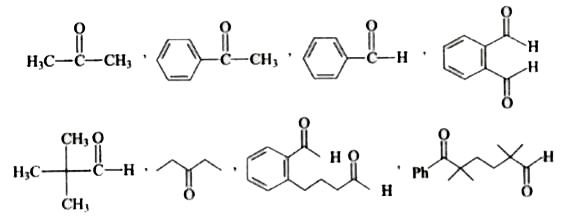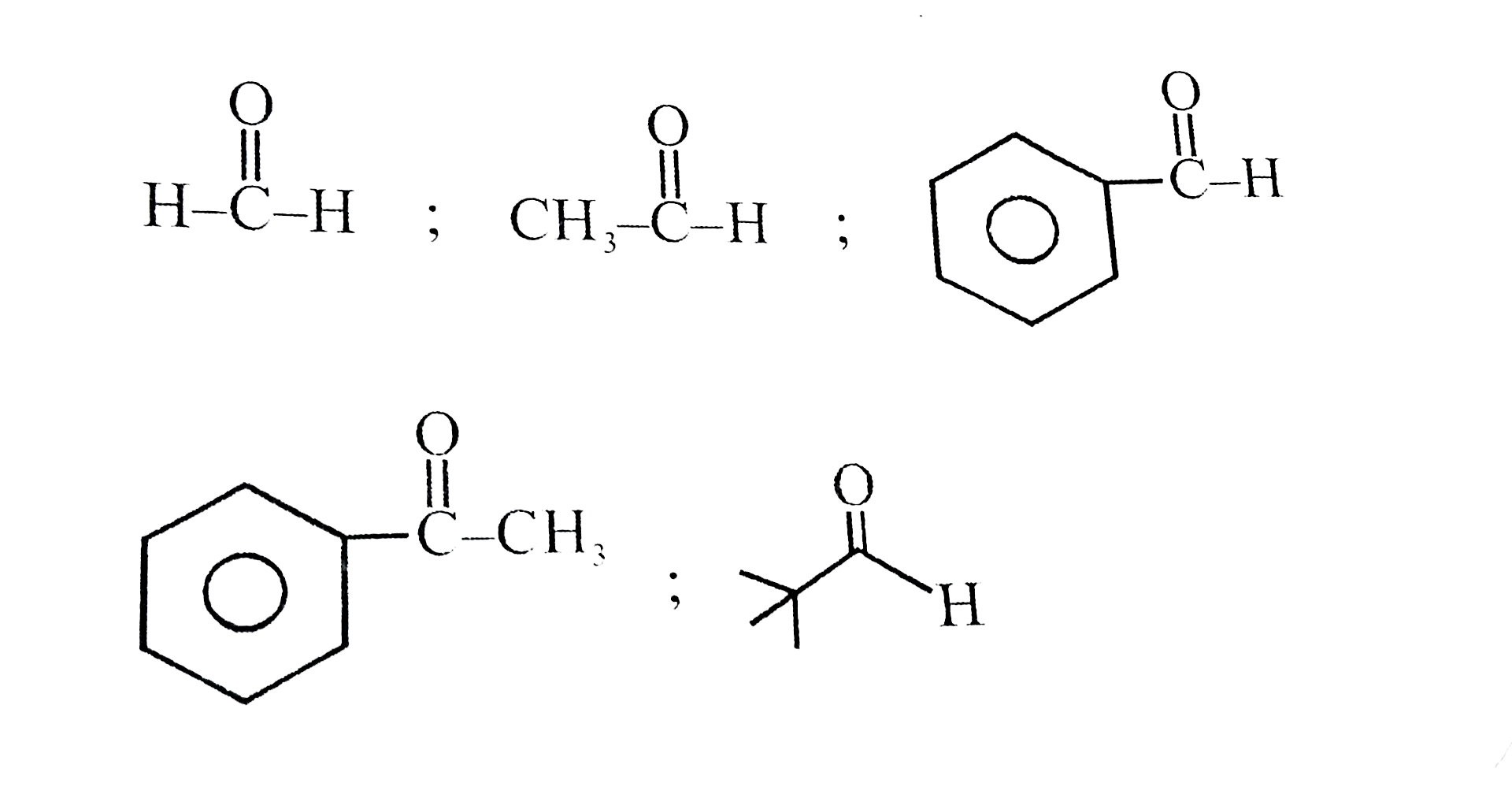A compound A with molecular formula C15H13Cl gives a white precipitate on adding silver nitrate solution A on reacting with alcoholic KOH gives compound B as the main product. B on ozonolysis gives C and C gives Cannizaro reaction but not aldol condensation. D gives aldol condensation but not Cannizaro react A is :
_E01_615_O01.png)
_E01_615_O02.png)
C6H5−CH2CH2CH2−CH2−Cl
C6H5−CH(2)−CH2−C∣ClH−CH3
The correct Answer is:B
To solve the question, we will break down the information provided step by step.
Step 1: Identify Compound A
We start with compound A, which has the molecular formula C₁₅H₁₃Cl. The fact that it gives a white precipitate with silver nitrate suggests that A is an alkyl halide (specifically, a chloroalkane). The white precipitate indicates the formation of silver chloride (AgCl) when Cl is displaced.
Hint: Look for alkyl halides that can react with silver nitrate to confirm the presence of chlorine.
Step 2: Reaction with Alcoholic KOH
When compound A reacts with alcoholic KOH, it undergoes elimination to form compound B, which is likely an alkene. Since alcoholic KOH acts as a dehydrating agent, it suggests that A is likely a secondary or tertiary alkyl halide to facilitate the elimination reaction.
Hint: Remember that alcoholic KOH promotes elimination reactions, leading to the formation of alkenes.
Step 3: Ozonolysis of Compound B
Compound B, which we suspect is an alkene, undergoes ozonolysis. Ozonolysis typically cleaves the double bond of alkenes to form carbonyl compounds (aldehydes or ketones). The products of ozonolysis are compounds C and D.
Hint: Ozonolysis of alkenes can yield aldehydes or ketones, so consider the structure of B carefully.
Step 4: Identify Compounds C and D
From the problem, we know that compound C gives a Cannizzaro reaction but not aldol condensation. For a compound to undergo Cannizzaro reaction, it must lack alpha hydrogens, which means C is likely an aldehyde without alpha hydrogens (e.g., benzaldehyde).
Compound D gives aldol condensation but not Cannizzaro reaction, indicating that D must have alpha hydrogens (e.g., acetone).
Hint: Recall the conditions for Cannizzaro and aldol reactions: Cannizzaro requires no alpha hydrogens, while aldol condensation requires at least two.
Step 5: Determine the Structures
- C (Benzaldehyde): C₆H₅CHO (no alpha hydrogens).
- D (Acetone): (CH₃)₂CO (has alpha hydrogens).
Step 6: Backtrack to Compound A
Since we deduced that B (the alkene) leads to C and D, we can infer that compound A must be a chloroalkane that can yield the alkene B upon elimination. The structure of A should be such that it can lead to the formation of both benzaldehyde and acetone.
The most likely structure for A is:
C₆H₅CH₂CCl(CH₃)₂ (a chloroalkane with a benzyl group).
Conclusion
Based on the deductions:
- A is likely to be C₆H₅CH₂CCl(CH₃)₂.
- B is the corresponding alkene formed from A.
- C is benzaldehyde, and D is acetone.
Thus, the answer to the question is that compound A is C₆H₅CH₂CCl(CH₃)₂.
We start with compound A, which has the molecular formula C₁₅H₁₃Cl. The fact that it gives a white precipitate with silver nitrate suggests that A is an alkyl halide (specifically, a chloroalkane). The white precipitate indicates the formation of silver chloride (AgCl) when Cl is displaced.
When compound A reacts with alcoholic KOH, it undergoes elimination to form compound B, which is likely an alkene. Since alcoholic KOH acts as a dehydrating agent, it suggests that A is likely a secondary or tertiary alkyl halide to facilitate the elimination reaction.
Compound B, which we suspect is an alkene, undergoes ozonolysis. Ozonolysis typically cleaves the double bond of alkenes to form carbonyl compounds (aldehydes or ketones). The products of ozonolysis are compounds C and D.
From the problem, we know that compound C gives a Cannizzaro reaction but not aldol condensation. For a compound to undergo Cannizzaro reaction, it must lack alpha hydrogens, which means C is likely an aldehyde without alpha hydrogens (e.g., benzaldehyde).
- C (Benzaldehyde): C₆H₅CHO (no alpha hydrogens).
- D (Acetone): (CH₃)₂CO (has alpha hydrogens).
Since we deduced that B (the alkene) leads to C and D, we can infer that compound A must be a chloroalkane that can yield the alkene B upon elimination. The structure of A should be such that it can lead to the formation of both benzaldehyde and acetone.
C₆H₅CH₂CCl(CH₃)₂ (a chloroalkane with a benzyl group).
Based on the deductions:
- A is likely to be C₆H₅CH₂CCl(CH₃)₂.
- B is the corresponding alkene formed from A.
- C is benzaldehyde, and D is acetone.
Topper's Solved these Questions
- ALKENE, ALKANE & ALKYNE BOOK - ALLENCHAPTER - ALKENE, ALKANE & ALKYNE EXERCISE - EXERCISE-5[B]
165 Videos
- ALKENE, ALKANE & ALKYNE BOOK - ALLENCHAPTER - ALKENE, ALKANE & ALKYNE EXERCISE - EXCERSISE-1
25 Videos
- ALKENE, ALKANE & ALKYNE BOOK - ALLENCHAPTER - ALKENE, ALKANE & ALKYNE EXERCISE - EXERCISE-5
58 Videos
- AIIMS 2019BOOK - ALLENCHAPTER - AIIMS 2019EXERCISE - CHEMISTRY
40 Videos
- ALKYL AND ARYL HALIDEBOOK - ALLENCHAPTER - ALKYL AND ARYL HALIDEEXERCISE - EXERCISE-05 (B)
35 Videos
Similar Questions
Knowledge Check
An aromatic compound A of the molecular formula C8H10O on reaction with iodine and dilute NaOH gives a yellow precipitate. The structure of the compound is expected to be :
A BC6H5CHOHCH3C
BC6H5CHOHCH3C D
D
Will CCl4 give white precipitate of AgCl on heating with nitrate? Give reason for your answer
View SolutionOf the followig carbonyl compounds,how many would give aldol condensation reaction?

View SolutionAn organic compound with molecular formula C6H12 upon ozonolysis gives only acetone as the product. The compound is :
View SolutionCompound 'A' of molecular formula C4H10O on treatment with Lucas reagent at room temperature gives compound 'B'. When compound 'B' is heated with alcoholic KOH, it gives isobutene. Compound 'A' and 'B' are respectively :
View SolutionSilver nitrate reacts with sodium oxalate to give white precipitate of
View SolutionA compound 'A' when reacts with LiAlH4 it gives two compounds B and C along with LiCl. Compounds A, B and C respectively are
View SolutionAn organic compound A of molecular formula C2H6O on oxidation gives a compound B which gives effervescence with baking soda solution. What are the compounds A and B? Write their structures.
View Solution

